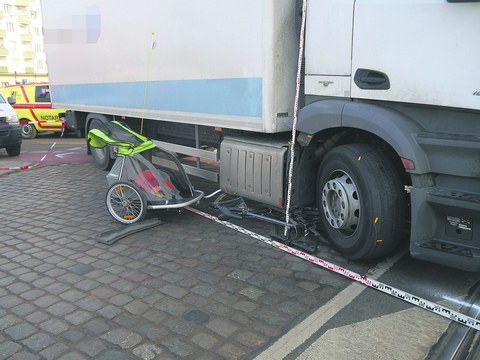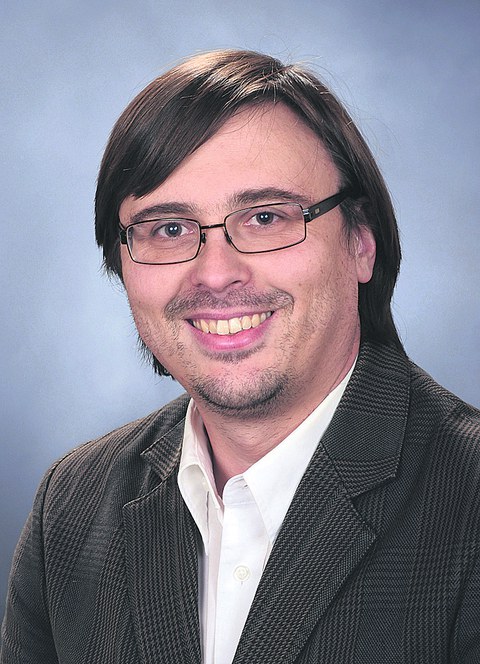Discussion surrounding turning assistants for trucks

The number of such dramatic accidents could be reduced by turning assistants
Endangerment or even injury of cyclists by right-turning vehicles (especially trucks)
Over the past few months, there has been a lot of talk surrounding accidents in which a right-turning truck has overlooked a cyclist or pedestrian going straight on and has injured them – sometimes severely – or even killed them. The question that has thus far come to the fore concerns how trucks can be made safer in their construction or through the help of devices, such as turning systems. Unfallanalyse Berlin GbR – an accident analysis firm – has discovered that the especially dangerous area is not in the “blind spot,” but rather further forward at the front passenger-side edge of the truck. And the Berlin company is clear in its evaluation: “From the point of view of an accident analyst, a human passenger is the simplest and most effective approach.”
Investigations of traffic patterns, traffic flow regulation and the consequences of current traffic laws have played a secondary role by comparison. The Universitätsjournal sat down with Thomas Unger, Director of Data Analysis and Simulation for Road Traffic Accident Investigation at TU Dresden GmbH.
UJ: Many truck drivers report that the fact that cyclists are allowed to come up from behind without any precautions and ride quickly past trucks on the right side is particularly risky and dangerous. That sort of assumption naturally has to be tested. Do you have analyzable data that shows whether a cyclist involved in an accident had previously ridden past a standing or slow-moving truck from behind on the right, or whether the cyclist was passed by the truck, which then simply overlooked the cyclist when turning right, or turned right too early?

Thomas Unger, Director of Data Analysis and Simulation for Road Traffic Accident Investigation at TU Dresden GmbH
Thomas Unger: The group of turning accidents between heavy vehicles and non-motorized road users was studied in depth as part of a thesis (see source below) written in collaboration with TU Dresden. The study found that 90% of incidents between trucks and bicycles occur when both are moving the same direction. Unfortunately, it is not possible to derive from the study whether the bicycle rode past a slower-moving/idling truck on the right or whether the truck passed the bicycle on the left. From nearly 20 years of experience studying accidents in the Dresden area, however, we know that these incidents occur in both of the situations described.
How – with what scientific methods – could it be possible to determine such a difference when studying the sequence of events in accidents? Reliable witnesses are no doubt a rarity.
The analysis of the events of an accident takes place through accident reconstruction. For this, all of the available information is used to draw conclusions about the mechanism of the accident. This includes, for example, scratch, skid or brake marks, damage to the vehicles, local conditions, statements from witnesses or people involved, and knowledge of the physics of driving. Once the facts of the accident itself have been clarified, then we go further in our accident research at TU Dresden GmbH. As part of a reverse simulation, we calculate the pre-collision movement of the participants in the accident up to five seconds beforehand in order to gain better insights into visibility conditions, approach paths and any other relevant aspects.
For the frequency and severity of these right-turn accidents, does it play a role whether the cyclist was on a bicycle path or simply came cycling up the right-hand edge of the road (without a bicycle path)? What do your data say?
Our data does not allow us to make a blanket statement. The most important thing in this type of accident is mutual perception. The truck driver must recognize the cyclist in time and correctly estimate his or her speed. That’s the only way these serious accidents can be avoided. For that, visibility hindrances have to be minimized and the roads have to be designed to minimize conflicts. In individual cases, however, numerous other aspects play a role, such as the timing of the traffic lights, the type of lighting, the presence of parked vehicles and, not least, the movement of the vehicles.
Is it possible to make generalizations based on the conclusions drawn from these data? For example, that the introduction of bicycle paths in certain traffic patterns may actually increase the risk of accidents? What do you recommend based on the data from Road Traffic Accident Investigation at TU Dresden GmbH?
One main impetus for our research project is to learn something from each individual case that can be expanded into suggestions for traffic and vehicle safety measures. Given how multi-faceted accidents can be, however, not every one of these accidents can be addressed with the same measures. That said, as a result of the thesis and our investigations, we are able to identify some potential improvements that can be made to the design of traffic patterns. These include bicycle paths close to the road, the clear marking of bicycle infrastructure and bicycle-friendly traffic lights (a head start for cyclists). All of these aim to make cyclists visible to truck drivers early and make their direction and speed assessable. Furthermore, we also see a certain potential in technical systems, such as turning assistants.
What advantages or disadvantages to these turning assistants have?
The advantage of this system is that it is available at every intersection because it is integrated in the vehicle, while it would be nearly impossible to adapt the entire infrastructure accordingly for reasons of cost and time. Naturally, the introduction of technical systems requires a certain amount of time for development and Europe-wide standardization. Moreover, measurable effects are only identifiable once the systems have reached a certain representation on the market. With a view to the truck fleet in Germany, which is seven years old on average, this could take one to two decades. Retrofitting existing vehicles, on the other hand, doesn’t make sense to us, as this would mean comprehensive interventions in the vehicle sensor and actuator systems.
Questions posed by Mathias Bäumel.
Background
As surprising as a jack-in-the-box
Author: M. B.
Any driver would probably recognize the horror of the situation: you wait at an intersection for the light to green and finally drive away – and suddenly a speedy cyclist comes riding past on the right from behind. As if out of thin air! And usually with only a dim light or none at all, maybe even on a rainy day … If an accident occurs, an analyst has to decide whether the driver had previously passed the cyclist (and should have seen him or her) or whether the cyclist really popped up suddenly as described above, like a jack-in-the-box. Being able to determine such information in detail so that appropriate recommendations could be made for traffic patterns would contribute to reducing the risk of accidents.
The original German version of this article was published on September 4, 2018 in the 13/2018 Dresden Universitätsjournal. The full issue can be downloaded as a PDF here. The UJ can be ordered in print or as a PDF from doreen.liesch@tu-dresden.de. You can find more information at universitaetsjournal.de.
